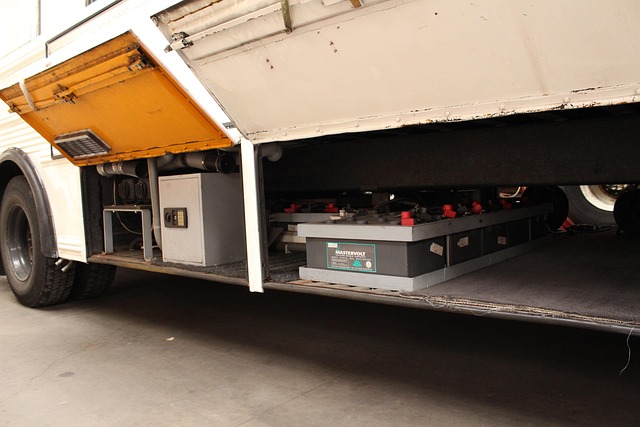Learn how to register your car in California effortlessly. This comprehensive guide walks you through the entire process, from understanding vital registration requirements to completing VIN (Vehicle Identification Number) verification. We’ll show you how to gather necessary documents, perform the VIN verification step-by-step, and choose between online or in-person DMV registration. Plus, discover how to pay fees and obtain your custom California license plate.
- Understand California Car Registration Requirements
- Gather Necessary Documents for VIN Verification
- Perform VIN Verification: Steps and Process
- Complete Online Registration or Visit DMV Office
- Pay Registration Fees and Receive Your Plate
Understand California Car Registration Requirements

Before registering your car in California, it’s crucial to understand the state’s specific requirements for vehicle identification number (VIN) verification. California requires a valid and accurate VIN from all vehicles seeking registration, ensuring that every car on the road is accounted for and meets safety standards. This process involves verifying the VIN through official channels to confirm the vehicle’s make, model, year, and other critical details.
One efficient way to accomplish this is by utilizing services like mobile vin inspection or a vin verifier. These professionals conduct thorough VIN verifications directly at your location, saving you time and effort. They employ specialized tools and databases to cross-reference the VIN with manufacturer records, ensuring its authenticity and preventing fraud. This step is essential, as California’s Motor Vehicle Department (DMV) strictly enforces these regulations to maintain a secure and reliable vehicle registration system.
Gather Necessary Documents for VIN Verification

To initiate the car registration process in California, you’ll need to gather specific documents for VIN (Vehicle Identification Number) verification. This crucial step ensures that your vehicle meets all legal standards before it can be registered and titled. Essential documents include your vehicle’s registration certificate from the previous state, if applicable, along with proof of insurance and a valid driver’s license. Additionally, you’ll require the original title or a lienholder letter if you’re financing your purchase.
For a seamless vin verification process, consider arranging these documents in advance to avoid delays. If you’re still unsure which papers are needed, you can reach out to your local California Department of Motor Vehicles (DMV) office for guidance on the mobile vin inspection or vin inspection procedures they offer.
Perform VIN Verification: Steps and Process

Performing a Vehicle Identification Number (VIN) verification is an essential step in the car registration process in California. It’s a crucial check to ensure that the vehicle is genuine and has not been reported stolen or had its identity altered. This process involves verifying the VIN data by cross-referencing it with official records.
To initiate this, you’ll need to obtain your vehicle’s VIN from the dashboard or the title documents. Then, contact a California Department of Motor Vehicles (DMV) approved VIN inspection station or utilize a mobile vin verification service. These services employ advanced technology and databases to cross-check the VIN against state records in minutes. They can also help identify any potential issues with your vehicle’s history, ensuring a smoother registration experience.
Complete Online Registration or Visit DMV Office

You have two options for registering your car in California: complete the process entirely online or visit a DMV office in person. The former is increasingly popular due to its convenience and time-saving nature, especially with the availability of digital tools like the California Vehicle Registration Renewal System. This platform allows you to initiate the registration process from the comfort of your home, where you’ll need to provide essential details about your vehicle, including its make, model, year, and unique identifier – the Vehicle Identification Number (VIN). Once you’ve submitted these crucial pieces of information, a VIN verification will be conducted to ensure the vehicle’s authenticity.
Alternatively, if you prefer a more traditional approach or face issues with the online process, you can visit a nearby DMV office. Here, a representative will guide you through the registration steps, which include presenting necessary documents and passing an inspection (a vin inspection) to confirm your vehicle’s condition. Regardless of the method chosen, ensuring accurate and up-to-date information is key to a smooth car registration experience in California.
Pay Registration Fees and Receive Your Plate

After completing your vehicle’s registration application, the next step is to pay the necessary fees. California charges a fee for vehicle registration, which varies based on factors like the type of vehicle and its age. You can typically pay online or in person at a DMV office. Once the payment is processed, you’ll be issued a unique vehicle identification number (VIN) verification report, sometimes referred to as a registration certificate or plate.
This document is crucial for your car’s official registration and must be presented when requesting license plates. In California, you can obtain license plates at a DMV office. Some residents choose to have their vehicles inspected by a mobile vin verifier or conduct a mobile vin inspection to ensure all details match before applying for plates, streamlining the process further.
Registering a car in California involves understanding specific requirements, gathering essential documents, and successfully completing either an online registration or a visit to a DMV office. The key step of VIN verification ensures vehicle authenticity and is a crucial process in the registration journey. By following these straightforward steps, you can efficiently navigate the process, ensuring your vehicle is legally registered and ready for California’s roads. Remember, proper registration is not only a legal requirement but also a vital step in maintaining your vehicle’s safety and insurance validity.



